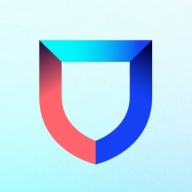


HackerOne and Lacework FortiCNAPP compete in cybersecurity, each with unique strengths. HackerOne's flexible pricing and support give it a cost-effective edge, while Lacework FortiCNAPP's advanced security features justify its higher cost, offering robust protection.
Features: HackerOne offers a bug bounty platform that enables effective vulnerability coordination, integrates with third-party tools for seamless management, and provides access to a skilled hacker community. Lacework FortiCNAPP delivers sophisticated cloud security with anomaly detection, comprehensive compliance management, and continuous monitoring capabilities.
Room for Improvement: HackerOne could enhance scalability options, improve advanced threat detection, and offer more detailed compliance reporting. Lacework FortiCNAPP might simplify its user interface, reduce the complexity of its setup for new users, and enhance cost transparency.
Ease of Deployment and Customer Service: HackerOne ensures easy deployment with straightforward processes and dedicated customer service. Lacework FortiCNAPP also provides a smooth deployment experience but requires users to navigate its complex feature set. Its strong support system, including comprehensive documentation, aids in overcoming this challenge.
Pricing and ROI: HackerOne's pricing is perceived as economical, providing a high ROI through effective vulnerability management suitable for budget-conscious strategies. Lacework FortiCNAPP demands a higher initial investment but offers substantial long-term ROI through advanced security outcomes and automation, appealing to enterprises seeking enhanced cloud protection.
| Product | Market Share (%) |
|---|---|
| Zafran Security | 1.0% |
| Lacework FortiCNAPP | 1.3% |
| HackerOne | 0.5% |
| Other | 97.2% |



| Company Size | Count |
|---|---|
| Small Business | 4 |
| Midsize Enterprise | 4 |
| Large Enterprise | 3 |
Zafran Security integrates with existing security tools to identify and mitigate vulnerabilities effectively, proving that most critical vulnerabilities are not exploitable, optimizing threat management.
Zafran Security introduces an innovative operating model for managing security threats and vulnerabilities. By leveraging the threat exposure management platform, it pinpoints and prioritizes exploitable vulnerabilities, reducing risk through immediate remediation. This platform enhances your hybrid cloud security by normalizing vulnerability signals and integrating specific IT context data, such as CVE runtime presence and internet asset reachability, into its analysis. No longer reliant on patch windows, Zafran Security allows you to manage risks actively.
What are the key features of Zafran Security?
What benefits can users expect from Zafran Security?
In industries where security is paramount, such as finance and healthcare, Zafran Security provides invaluable protection by ensuring that only exploitable vulnerabilities are addressed. It allows entities to maintain robust security measures while allocating resources efficiently, fitting seamlessly into existing security strategies.
HackerOne leads in offensive security with a platform that expertly identifies and remedies security vulnerabilities using AI and a vast researcher community. Trusted by industry giants, it integrates bug bounties, vulnerability disclosure, and code security in software development.
The HackerOne Platform offers a comprehensive suite of services, combining advanced AI technology with the skills of a global security researcher community to address complex security challenges. It facilitates an understanding of vulnerabilities, promoting better remediation practices across software lifecycles. Notable clients include Anthropic, Crypto.com, General Motors, GitHub, Goldman Sachs, Uber, and U.S. Department of Defense. Recognized for innovation and workplace excellence, HackerOne continues to set standards in security solutions.
What key features does HackerOne offer?HackerOne finds significant applications in various sectors with its focus on vulnerability assessment, testing, and responsible disclosure. Organizations utilize it for ethical hacking and efficient vulnerability coordination, making it essential in cybersecurity strategies. The platform's reliability is evident in its ability to identify and document security threats effectively.
Lacework FortiCNAPP provides robust cloud security, combining vulnerability management and multi-cloud insight with user-friendly controls, machine learning detection, and compliance support.
Lacework FortiCNAPP specializes in cloud security by merging machine learning anomaly detection with agent-based vulnerability management to offer detailed alerts and compliance reports. Its comprehensive approach allows continuous monitoring across AWS and Kubernetes, providing insights from an attacker's perspective. The platform offers automation and seamless Slack integration, facilitating collaborative and efficient cloud security management. Users value its ability to handle multi-cloud environments and scan IAC scripts, configurations, and compute nodes across AWS and GCP.
What are the key features?Organizations across sectors leverage Lacework FortiCNAPP for cloud security, focusing on compliance, security posture, and vulnerability management. It is widely used for monitoring AWS and Kubernetes environments, scanning IAC scripts, configurations, and securing compute nodes. It supports multi-cloud security posture management and log ingestion, enabling companies to maintain strong cloud infrastructures without dedicated security layers.
We monitor all Vulnerability Management reviews to prevent fraudulent reviews and keep review quality high. We do not post reviews by company employees or direct competitors. We validate each review for authenticity via cross-reference with LinkedIn, and personal follow-up with the reviewer when necessary.